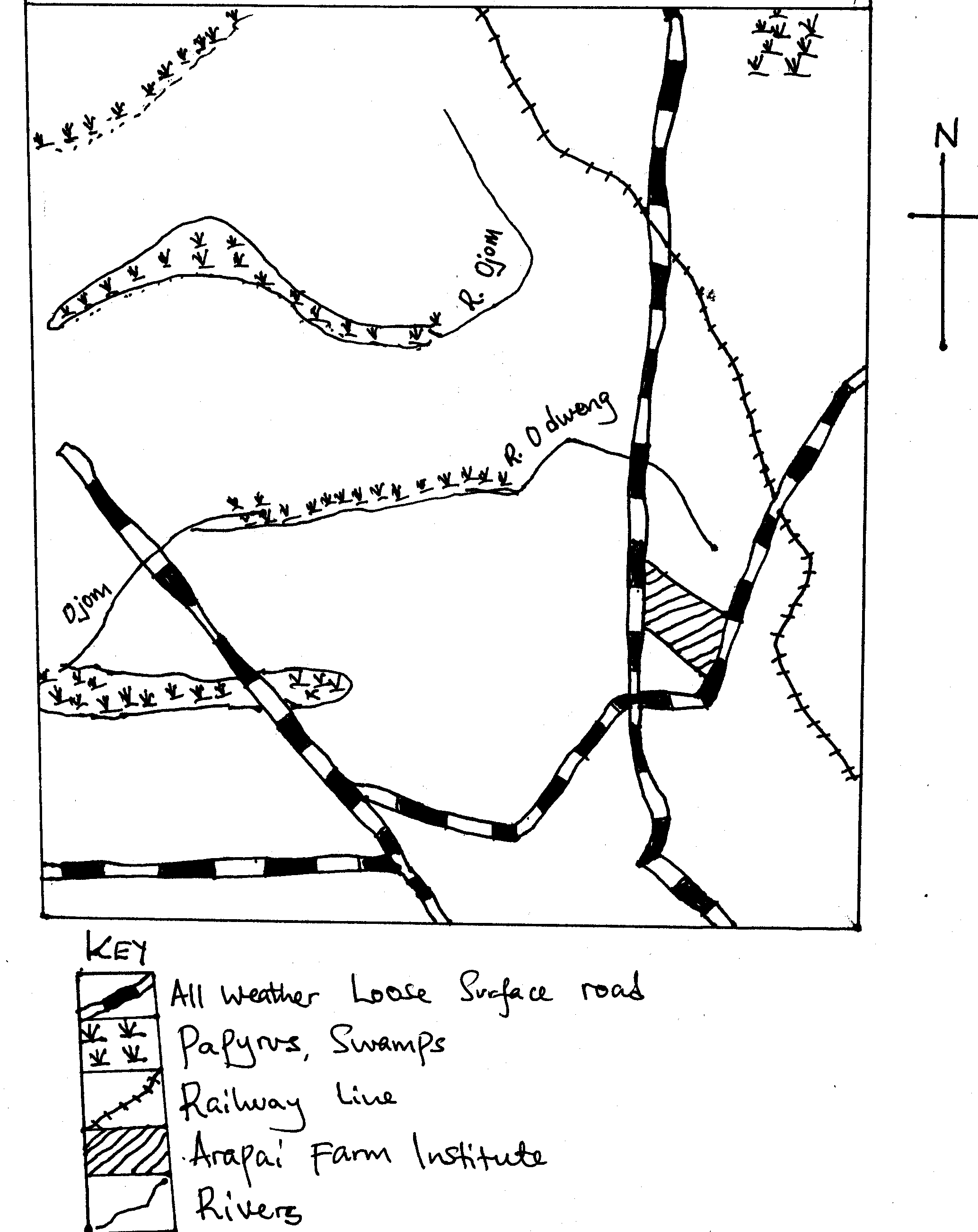Map Work Revision Questions
1. Study the 1:50,000 (UGANDA) ARAPAI, Map extract; Series Y732; part of sheet 43/1; Edition 1 D.O.S. and answer the questions that follow:
(a) Identify the :
(i) physical feature found at grid reference 561011
(ii) man-made feature found at grid Reference 628973.
(b) State the grid reference of the:
(i) level crossing at Akaikai ,
(ii) borehole at Dakabela.
(c) (i) State the bearing of Ojingai road junction ( grid reference
639938) from the bridge on River Odudui (grid reference 697077).
(ii) Measure and state in kilometres the distance of the Soroti all-weather bound surface road.
(d) Draw a sketch map of the area shown on the map and on it, mark and name:
i. Arapai farm institute,
ii. the railway line ,
iii. all weather loose surface roads,
iv. papyrus swamps ,
v. rivers : Ojom and Odueng.
(e) With evidence from the map extract, identify the:
(i) human activities being carried out in the area ,
(ii) Problems faced by the people living in the area.?
POSSIBLE ANSWERS
1. (a) Physical feature found at Grid Reference 561011 is a conical hill /hill.
(ii) Man made feature found at GR 628973 is a dam
(b) (i) 717004 (ii) 696052
(c) (i) Bearing is 202○ SSW ( 201-203) SSW.
(ii) Distance is 6.1km (6.0- 6.2) km
d) A sketch map of Arapai showing farm institute, railway line all weather loose surface road, papyrus swamp and rivers

(e) (i) Human activities being carried out in the area with the evidence from the map are:
Crop cultivation and the evidence is either a farm institute, Rural settlement, or cotton store at Dakabera,
Animal rearing /pastoralism. The evidence is Guarantine station, paddock in Arapai farm institute, scrub vegetation, dams and boreholes.
Trade and commerce. Evidence being a Trading centre at Arapai, railway station, cotton stores, cattle market, roads, railway, oil depot.
Transport and communication. Evidence is the Roads and Railway station
Forestry. The evidence is Dakadera and Odudui Forests.
6. Craft industry. The evidence is a papyrus swamp.
Tourism. The evidence is the Rest house and forest reserve .
(ii) Problems faced by the people living in the area
1. Diseases for example malaria due to swamps which are breeding grounds for mosquitoes.
2. Water shortage evidenced by boreholes dams and water tanks
3. Its expensive to construct roads, bridges and culverts because of numerous swamps and streams.
4. Drought existence of seasonal swamps
5. Inadequate rainfall due to existence of dams and water tanks to store water.
6. Poor accessibility of the central and North western hence resorted to use of footpath
7. Cattle diseases due to quarantine station
8. Floods due to existence swamps.
2. Study the Map extract 1:50,000 (UGANDA) LIRA Series Y732, part of sheet 32/4 Edition 1-U.S.D. and answer the questions that follow:
(a) State the grid reference of:
(i) the bridge on River Wiodyek ,
(ii) Muto Secondary Trigonometrical Station,
(b) Identify the:
(i) man-made feature found at grid reference 797435
(ii) drainage feature found at grid reference 877444.
(c) (i) State the general direction of flow of Alidi-Igel-Aluga river.
(ii) Measure the all-weather bound surface road from grid reference 871486 to grid reference 903409.
(d) Draw a sketch map of the area shown on the map and on it, mark and name:
(i) Lira town ,
(ii) all-weather loose surface roads.
(iii) seasonal swamps,
(iv) Any three areas of nucleated settlement.
(e) (i) Giving evidence from the map extract, identify the economic activities taking place in the area.
(ii) What evidence is there to suggest that this area is generally flat?